This site uses only a few technical cookies necessary for its operation. By continuing to browse, you accept their use.
To find out more...
To find out more...
Raising (or leavening) agents
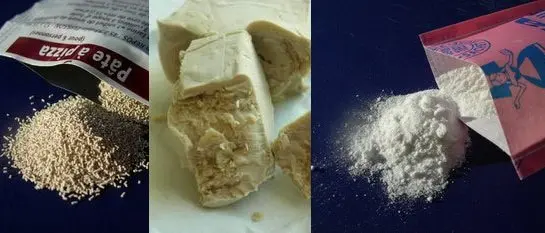
When we want to make a dough or batter rise when baking, either in patisserie or bread-making, we need to use a raising agent or leavening agent, one of which is called leaven.
In the context of baking, a raising agent is simply what "makes something rise". It is a substance which, when added to the dough or batter makes it swell up by creating thousands of tiny bubbles of carbon dioxide within it.
As there are 2 kinds of yeast, 2 kinds of leaven and baking powder as well, this can be confusing, so here is a summary of the different types and how they act.
In the context of baking, a raising agent is simply what "makes something rise". It is a substance which, when added to the dough or batter makes it swell up by creating thousands of tiny bubbles of carbon dioxide within it.
As there are 2 kinds of yeast, 2 kinds of leaven and baking powder as well, this can be confusing, so here is a summary of the different types and how they act.
57 K 4.8/5 (18 reviews)
Keywords for this post:YeastSourdoughBreadBakeryPastryBaking powderLast modified on: June 16th 2021
Raising (or leavening) agents
Baker's Yeast
This is the yeast used by bakers to make bread, brioches, etc. It is basically the same kind that brewers use to make beer, so it is sometimes also known as brewer's yeast.Yeast is a living organism, a microscopic fungus, called saccaromycès cerevisae, which reacts with the sugars in flour to form carbon dioxide. It is this fermentation process that makes the dough rise. Yeast is available in 2 forms:
Fresh yeast
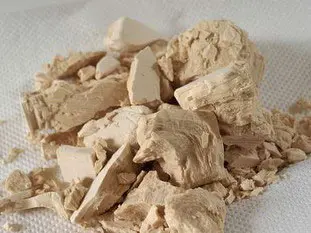
Dried yeast
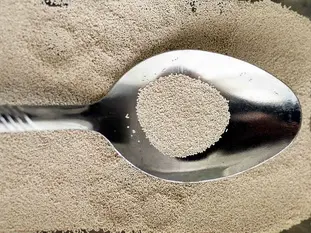
Baking powder
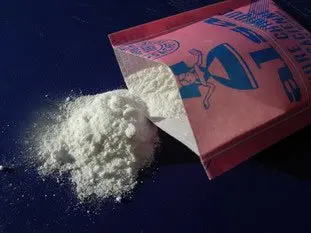
Baking powder is used mostly for cakes, scones, etc.
Leaven
Leaven is a natural raising agent, like yeast. It is made from a mixture of water and flour that begins to ferment when exposed to the naturel yeasts present in the air.
It is a living substance and reacts with the sugars in flour to form carbon dioxide by fermentation, which makes the dough rise. Two different forms can be made:
Liquid leaven
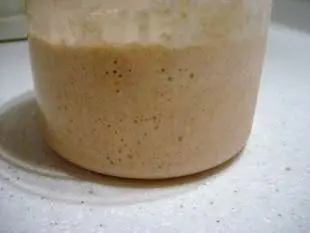
Stiff leaven

Whether the leaven is liquid or stiff it makes little difference in its use, but a lot in the taste of the bread obtained.
It is worth noting in passing that when making leavened bread, it is usual to combine a large amount of leaven with a little yeast. This improves the bread's appearance especially the crust.
Summary
We can say that yeast and leaven work by fermentation, whereas baking powder uses a chemical reaction.
Lasts posts
Butter vs. grease
We often read in a recipe where a pastry is put into a mould that, just before pouring, the mould should be buttered or greased. But what's the difference between these 2 terms?December 1st 20256725
Getting out of the fridge early
Very often when you're cooking, you need to take food or preparations out of the fridge, to use them in the recipe in progress. There's nothing tricky about this: you just take them out of the fridge and use them, usually immediately, in the recipe. But is this really a good method?November 24th 20259665
Who's making the croissants?
When you look at a bakery from the outside, you naturally think that in the bakery, the bakers make the bread, and in the laboratory, the pastry chefs make the cakes. It's very often like that, with each of these professions having quite different ways of working, but sometimes there's also one...November 23th 2025867
Oven height
When we put a dish or cake in the oven, we naturally tend to put it on the middle shelf, and that's what we usually do. But in some cases, this position and height can be a little tricky, so let's find out why.October 8th 20252,4575
The importance of sieving
In recipes that use a fine powder (flour, powdered sugar, etc.), you'll often see the advice to sift before using it. To sift is to pass the powder in question through a sieve (a very fine strainer) before incorporating it into your recipe. It's often advice, but is it really useful?September 3rd 20257,3433
Other pages you may also like
Different kinds of pastry and dough
When cooking in general, and particularly in baking, we can make and use many different kinds of pastry and dough. All built on the same "base": flour - a powder to which we add fat, liquid or both to produce the dough which is then cooked. .November 6th 2012111 K 14.0
What is the difference between bakery and patisserie?
This is a question that you may well have asked yourself and which I will attempt to answer. In France the two trades of "boulangerie" (bakery) and "pâtisserie" (patisserie and confectionery) have always been quite distinct, but where exactly do the boundaries lie? .February 7th 2017134 K 14.1
The mock CAP baker's certificate exam
The next instalment in my life as an apprentice baker at the French INBP professional school. I’m now halfway through training and it’s still as exciting as ever, and exhausting – but maybe I’m just getting old, or both… Anyway, a few days ago we had to go through the mock CAP exam. A sort...May 1st 201821 K4.4
The march forward
When professionals get to work in their kitchen, lab or bakery, they are (if they are conscientious) very sensitive to hygiene and cleanliness. It is impossible for a good baker for example to do a day's work without regularly cleaning the table where he or she works, and it is even more...June 30th 202120 K5
For well opened (puffed) cakes
It's always nice to have a well puffed up cake after baking, not only will it taste good but it looks great too. Let's see how to get this beautiful shape almost every time.January 23th 201935 K4.2
Post a comment or question
Follow this page
If you are interested in this page, you can "follow" it, by entering your email address here. You will then receive a notification immediately each time the page is modified or a new comment is added. Please note that you will need to confirm this following.
Note: We'll never share your e-mail address with anyone else.
Alternatively: you can subscribe to the mailing list of cooling-ez.com , you will receive a e-mail for each new recipe published on the site.









